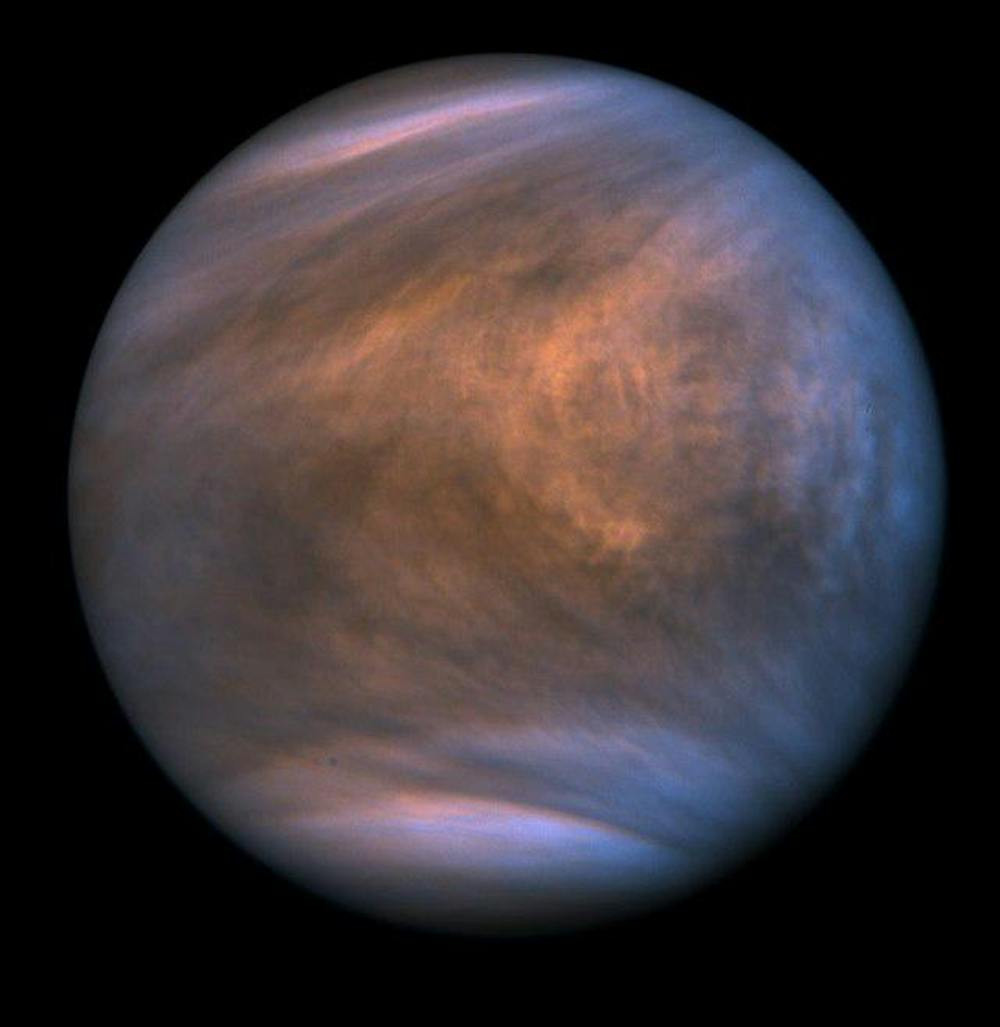Until recently, researchers believed only one planet in our solar system had plate tectonics: Earth. But in a recent study, Brown University researchers used atmospheric modeling to show that Venus, much of whose geological history is a mystery, once had plate tectonics — the shifting of plates composing its surface — not entirely unlike present-day Earth.
“When we look at Venus, we actually see the aftermath of the end of plate tectonics, so … we are looking at potentially the future of the Earth,” said Matthew Weller, the study’s first author, current Urey Fellow at the Lunar and Planetary Institute in Houston and former postdoctoral research associate at the University.
Almost all of Venus’s surface area was formed in the last half-billion years. The study grapples with Venus’s history prior to the crust observed today.
While Earth and Venus are “sister planets” in size and Milky Way neighbors, the planets are opposites in every other way, according to Weller. Venus has an atmosphere 93 times denser than Earth’s with toxic carbon dioxide levels, as well as a surface temperature of 867 degrees Fahrenheit.
Like every other planet in our solar system except Earth, Venus has a “stagnant lid” regime, meaning there is no physical movement of portions of Venus’s crust, said co-author Daniel Ibarra, assistant professor of Earth, environmental and planetary sciences and environment and society. Earth, by contrast, has an “active lid,” meaning the crust is divided into plates that slide back and forth, Ibarra said.
“When the sun formed … and the planets formed, (Venus and Earth) were probably under pretty similar conditions,” said Professor of Earth, Environmental, and Planetary Sciences James Head PhD’69, who was not involved in the study. Despite the planets’ similarities, studying Venus is still a big challenge. “You're not in Kansas anymore,” Head said.
“How did these two otherwise similar planets evolve so fundamentally differently, one a hellish landscape, one perfect for life?” Weller said. “That’s what the study we did is trying to address.”
Because a planet’s atmosphere is largely composed of gases that leave its mantle, “we can tell a lot (about a planet’s tectonics) by understanding the composition of the atmosphere,” said Head.
There are two main theories explaining Venus’s current composition. The first is that its atmosphere traces back to the initial release of gases at the very origin of the solar system and has remained stable since then. According to Weller, that might not be "terribly realistic.”
The other theory proposes that Venus was once more habitable and that its current atmosphere came to be later due to “catastrophic overturning or transient tectonics,” Weller explained.
“We showed that it's actually potentially in the middle” of the two theories, Weller said. “That if you started in plate tectonics very, very early on, a natural consequence is exactly a Venusian atmosphere.”
The study examines atmospheric nitrogen because the gas’s long shelf life allows for extensive analysis of outgassing and tectonic history.
The researchers modeled Venus’s history, assuming either active plate tectonics or stagnant lid throughout the evolution of Venus to see what atmosphere would have been produced. A plate tectonics history is more similar to Earth, while a stagnant lid is more similar to Mars or Mercury.
“We actually found that the only way we could match current Venusian nitrogen abundances, and CO2 levels as a secondary characteristic, was through plate tectonics,” Weller said. “Specifically, an early phase of plate tectonics would have had to last at least a billion years.”
So why does understanding if Venus had plate tectonics matter?
According to Weller, existing research suggests that “the proliferation and long-term habitability of a planet is directly tied to plate tectonics.” That’s in part because Earth, the sole planet with known life, is also the only one with known active plate tectonics. Plate tectonics impact the cycling of volatiles — readily vaporizing materials in the mantle — like water and CO2, many of which are key for life.
“What plate tectonics does is … bring materials in and then back out (from the Earth’s crust), so it doesn't lock them away where life can't get to them,” Weller said. “It keeps them mobile for life to be able to access this energy and food sources.”
The researchers originally developed their model to study how exoplanets, or planets beyond our solar system, form their atmospheres, Ibarra said.
Studying exoplanets can both reveal insights about Earth itself and put forward other questions: “Are there other habitable worlds? If there are — (and) there likely are — how many are there?” Ibarra added.
“Being able to use the atmosphere of Venus to infer the inner workings of the planet is really important when we look at these extrasolar planets,” Weller said. “We might be able to infer that there is plate tectonics, that there's liquid water and maybe even life.”

Elise Haulund is a science & research editor and sophomore from Redondo Beach, CA. Concentrating in English and biology, she has a passion for exploring the intersection between STEM and the humanities. Outside of writing, researching and editing, she enjoys ballet-dancing, cafe-hopping and bullet-journaling.





